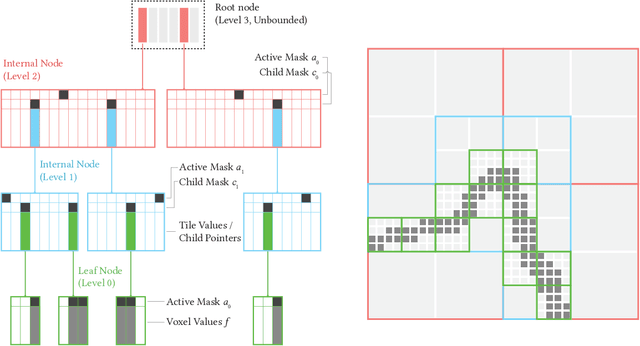Doyub Kim
Near-realtime Facial Animation by Deep 3D Simulation Super-Resolution
May 05, 2023Abstract:We present a neural network-based simulation super-resolution framework that can efficiently and realistically enhance a facial performance produced by a low-cost, realtime physics-based simulation to a level of detail that closely approximates that of a reference-quality off-line simulator with much higher resolution (26x element count in our examples) and accurate physical modeling. Our approach is rooted in our ability to construct - via simulation - a training set of paired frames, from the low- and high-resolution simulators respectively, that are in semantic correspondence with each other. We use face animation as an exemplar of such a simulation domain, where creating this semantic congruence is achieved by simply dialing in the same muscle actuation controls and skeletal pose in the two simulators. Our proposed neural network super-resolution framework generalizes from this training set to unseen expressions, compensates for modeling discrepancies between the two simulations due to limited resolution or cost-cutting approximations in the real-time variant, and does not require any semantic descriptors or parameters to be provided as input, other than the result of the real-time simulation. We evaluate the efficacy of our pipeline on a variety of expressive performances and provide comparisons and ablation experiments for plausible variations and alternatives to our proposed scheme.
NeuralVDB: High-resolution Sparse Volume Representation using Hierarchical Neural Networks
Aug 08, 2022



Abstract:We introduce NeuralVDB, which improves on an existing industry standard for efficient storage of sparse volumetric data, denoted VDB, by leveraging recent advancements in machine learning. Our novel hybrid data structure can reduce the memory footprints of VDB volumes by orders of magnitude, while maintaining its flexibility and only incurring a small (user-controlled) compression errors. Specifically, NeuralVDB replaces the lower nodes of a shallow and wide VDB tree structure with multiple hierarchy neural networks that separately encode topology and value information by means of neural classifiers and regressors respectively. This approach has proven to maximize the compression ratio while maintaining the spatial adaptivity offered by the higher-level VDB data structure. For sparse signed distance fields and density volumes, we have observed compression ratios on the order of $10\times$ to more than $100\times$ from already compressed VDB inputs, with little to no visual artifacts. We also demonstrate how its application to animated sparse volumes can both accelerate training and generate temporally coherent neural networks.
 Add to Chrome
Add to Chrome Add to Firefox
Add to Firefox Add to Edge
Add to Edge